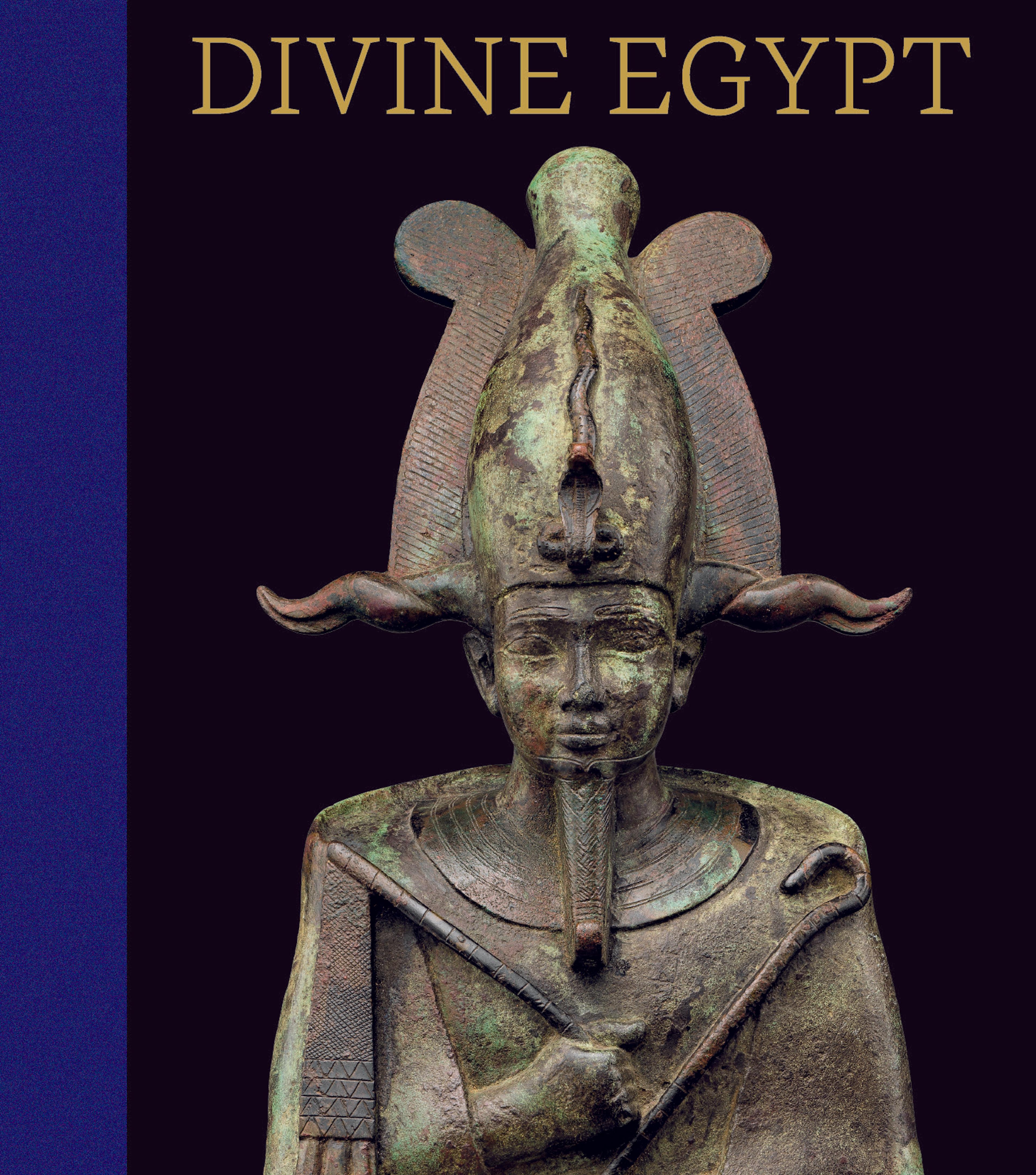Amulet of a lion-headed Bastet
This amulet represents a lion-headed goddess on an open worked throne. With her right hand she is holding a sistrum (a musical instrument like a rattle) that is topped by a double ba-bird. Her other hand clenches a papyrus-scepter that symbolizes regeneration and life. A number of lion-headed goddesses are known from ancient Egypt, such as Sakhmet, Bastet, and Wadjet, and it is unclear, which one is represented here. Each side of the throne depicts a lion-headed goddess with a sun disk on her head. Behind her is a snake god with human arms and legs, who is linked to stellar decans. Above the snake’s head and in front of the lion headed goddess are short columns of text that presumably give their names; but unfortunately they are undecipherable. All feline deities are closely connected to the sun god Ra and at the top of the large figure, between her ears, is a small hole that originally must have held a separately manufactured sun disk. The loop at the top of the amulet was meant for suspension. The Egyptians believed that amulets like this one evoked the power of the goddess and put the wearer under her protection.
Artwork Details
- Title:Amulet of a lion-headed Bastet
- Period:Third Intermediate Period
- Reign:probably reign of Osorkon II or later
- Date:ca. 872–664 BCE
- Geography:From Egypt
- Medium:Faience
- Dimensions:H. 6.8 × W. 1.8 × D. 4.2 cm (2 11/16 × 11/16 × 1 5/8 in.)
- Credit Line:Purchase, Edward S. Harkness Gift, 1926
- Object Number:26.7.868
- Curatorial Department: Egyptian Art
More Artwork
Research Resources
The Met provides unparalleled resources for research and welcomes an international community of students and scholars. The Met's Open Access API is where creators and researchers can connect to the The Met collection. Open Access data and public domain images are available for unrestricted commercial and noncommercial use without permission or fee.
To request images under copyright and other restrictions, please use this Image Request form.
Feedback
We continue to research and examine historical and cultural context for objects in The Met collection. If you have comments or questions about this object record, please contact us using the form below. The Museum looks forward to receiving your comments.
